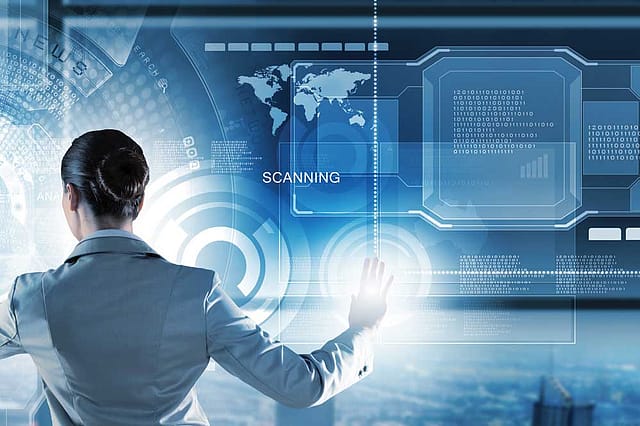Our Digital Future

Hitachi Social Innovation Forum’s 2016 edition was held in Mumbai late last year. Its goal was to provide solutions through ‘Collaborative Creation’ to the increasingly complex issues that have come up with India’s rapid urbanisation. The forum brought together some of India’s brightest minds to share ideas and visions on how to mould the future through digital transformation. The meet specifically addressed areas such as Data Solutions, Information Technology, IT Infrastructure and Urban Rail Transportation.
This is precisely what Hitachi’s Social Innovation does: it resolves niche issues faced by society and customers by combining technology with customised solutions. The speakers, including Kojin Nakakita, Managing Director, Hitachi India Pvt. Ltd.; Kenji Hiramatsu, the Ambassador of Japan to India; and Honourable Chief Minister of Maharashtra, Devendra Fadnavis, emphasised that technology is at the forefront of the way the world is transforming today.
There is a new disruption every day that changes lives. What India needs for development are not just roads that link villages to cities but digital highways that can network the entire country. This can help transform lives overnight. And the ideas thrown up at the Hitachi Social Innovation Forum are expected to contribute to that and create a stepping stone to a better India.
Digital transformation, in a nutshell, means that all companies have to become tech companies. They can no longer be classified simply as banking, FMCG or transport companies. In India, the advent of the smartphone is perhaps the single biggest innovation in the last decade. According to a recent Nasscom and Akamai report, by 2020, 730 million people will be on the internet in India, with 700 million smart phone users. Its widespread use and penetration means that it has become the biggest enabler of technology by providing Indians — across incomes and geographies — access to data and the internet.
The challenge is to know how to use the unprecedented access that a huge section of the population will have to the internet in such a way that life becomes easier and urban issues are addressed simultaneously. Translated into banking, this means creating on-the-go solutions for services ranging from payment of taxes and bills to paying salaries or sending money abroad. HDFC spokespersons say, for example, that the bank has provided 150 features on its mobile banking app. Mobile transactions have increased every day in the last five years in India, growing from 3 per cent to 20 per cent in the last three years alone. These are stunning numbers, and prove that digital India is not a dream but a mindset.
What is forcing organisations to become digital? The answer is consumerism. Whether in automobile, retail, manufacturing, entertainment or hospitality, consumer demands have meant that all companies have to first become IT companies. Multiplexes have to offer online ticketing, hotels have to allow customers to check in from airport lounges and druggists must enable patients to order medicines from home.
None of this will work unless supported by a huge quantum of infrastructure — servers, storage, networks and more— which work together to deliver an app to the end-user. This is the data centre, and companies are gearing up to establish massive backend machines. Even companies not seen as new-age enterprises have begun to install chatbots for routine responses and robots in workshops for specialist welding and other tasks. IT infrastructure has to be constantly upgraded to be robust, agile and innovative. Businesses that don’t adapt quickly will be destroyed. The other big enabler of the digitised world is big data. If five years ago, OPEC was dictating the world economy, today it is data. Cloud computing might be an expensive solution but a pure RoI calculation will not work because the outlay cost has to be seen in the long term — the value delivery will not be immediate but in the future. Along with cost, the other concern with Big data is security. But industry has quickly realised that security breaches are inevitable, and are instead focussing on cutting-edge detection solutions, so that they can put a superquick incident response policy in place.
If digitisation can make a big difference in one other important area, it is urban rail transportation. IT and ICT solutions can improve capacity, security, throughput, passenger safety and asset management for the railways. The challenge is to adapt the technologies to the Indian context and overlay it on existing systems. IT and ICT can network main and suburban lines with other modes of transport to create seamless commuting. A common control centre can be established to handle disruptions and improve efficiencies and also monitor train health remotely, thus reducing stoppages and downtime.
New digital signalling technology can reduce derailments and collisions significantly. With the Mumbai suburban rail alone running 2,800 services a day and carrying eight million passengers, digital signalling and dedicated freight corridors become vital.
In all of this, the government is playing a pivotal role. As A.P. Hota, MD-CEO, National Payments Corporation of India, pointed out, the RBI has been very innovative and India is one of the first countries to have regulations for mobile banking. According to Mr. Hota, the Indian card Rupay’s market share is a high 37 per cent today in terms of card issuance. The government is encouraging digitisation across sectors.
Hitachi, with its diverse range of technology — spanning infrastructure, finance, telecom, energy, water management and industrial solutions — and its great advances in Artificial Intelligence and the Internet of Things is in an ideal position to support innovative ideas that address India’s socio-economic needs. As Indian businesses evolve, it is integrators like Hitachi who will work with them to find joint solutions.
(A marketing initiative by Open Avenues)